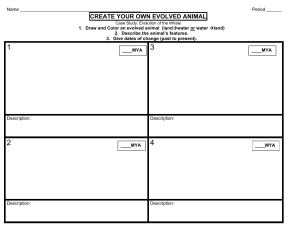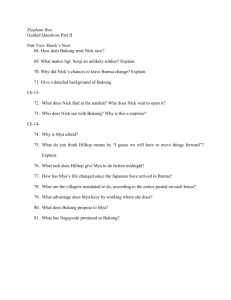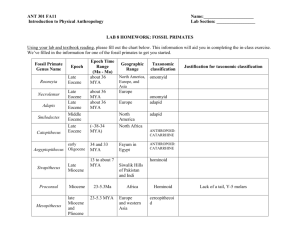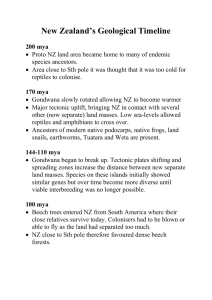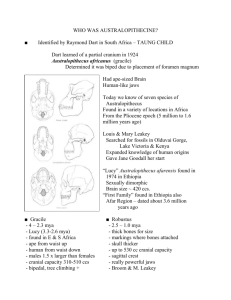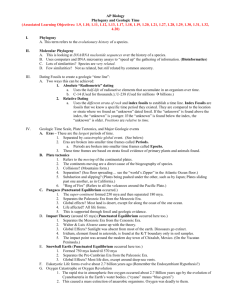Name: Class: Geologic Timescale Webquest Go to: http://www.bgs
advertisement
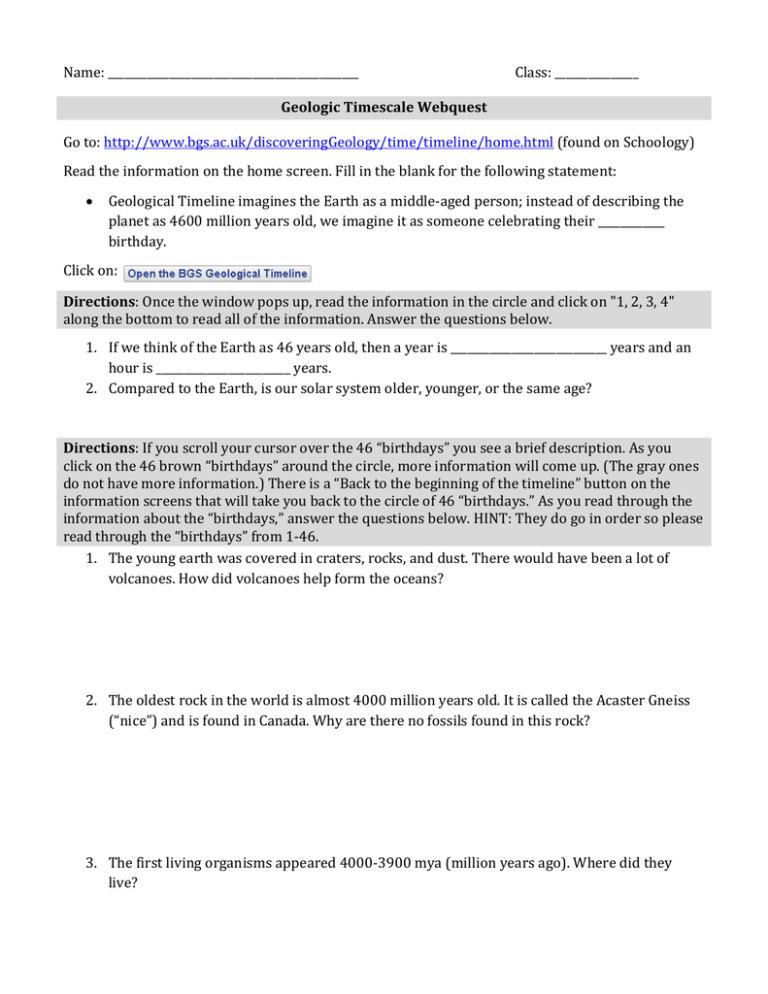
Name: _____________________________________________ Class: _______________ Geologic Timescale Webquest Go to: http://www.bgs.ac.uk/discoveringGeology/time/timeline/home.html (found on Schoology) Read the information on the home screen. Fill in the blank for the following statement: Geological Timeline imagines the Earth as a middle-aged person; instead of describing the planet as 4600 million years old, we imagine it as someone celebrating their ____________ birthday. Click on: Directions: Once the window pops up, read the information in the circle and click on "1, 2, 3, 4" along the bottom to read all of the information. Answer the questions below. 1. If we think of the Earth as 46 years old, then a year is ____________________________ years and an hour is ________________________ years. 2. Compared to the Earth, is our solar system older, younger, or the same age? Directions: If you scroll your cursor over the 46 “birthdays” you see a brief description. As you click on the 46 brown “birthdays” around the circle, more information will come up. (The gray ones do not have more information.) There is a “Back to the beginning of the timeline” button on the information screens that will take you back to the circle of 46 “birthdays.” As you read through the information about the “birthdays,” answer the questions below. HINT: They do go in order so please read through the “birthdays” from 1-46. 1. The young earth was covered in craters, rocks, and dust. There would have been a lot of volcanoes. How did volcanoes help form the oceans? 2. The oldest rock in the world is almost 4000 million years old. It is called the Acaster Gneiss (“nice”) and is found in Canada. Why are there no fossils found in this rock? 3. The first living organisms appeared 4000-3900 mya (million years ago). Where did they live? 4. For life to evolve, water was necessary. What six chemical elements were also needed? 5. The oldest truly known fossils (about 3100 mya) are found in South Africa. What are these fossils of? 6. For the first ______________________________________ million years on Earth, all living things were made of just one cell! 7. Even about 2200 mya, there was still no life on land except bacteria that lived in ponds and in soil. Explain why. 8. How did the atmosphere gain more oxygen around 2100 mya? 9. The oldest fossils of eukaryotes have been found in rocks that formed 1400 mya. Eukaryotes could only survive when there was enough ____________________________ in the water. a. Eukaryotic Cells - These cells are typically a lot bigger and more complex than prokaryotic cells. They have a defined cell nucleus which houses the cell's DNA. These are the types of cells we find in plants and animals. 10. What type of organisms were likely the first to try to leave the protection of the ocean and live on land? 11. ___________________________________________________________ (single-celled protists) are the nearest relatives to animals so far discovered. 12. Some of the first multi-cellular animals were the sea-pens, which were very simple. How did sea-pens get their food? 13. Creatures resembling jelly fish evolved around _______________________________ million years ago. 14. Between 600-500 mya, animals developed ___________________ ______________________ and ____________________________________ for the first time. 15. What are trilobites? 16. __________________________________ and ________________________________ produced the oxygen and ozone that built up in Earth’s atmosphere, and about ________________________ mya there was enough to stop the harmful radiation from the sun reaching Earth’s surface. 17. One of the earliest land plants (Cooksonia) are known as “vascular plants.” Why? (Explain what a vascular plant is.) 18. About 300 mya, animals like _____________________ ______________________ and ________________________ managed to survive out of the water in damp soil. 19. Amphibians also evolved at this time. Why did they stay close to rivers and lakes? 20. Amphibians later evolved into _____________________________. 21. Just over 200 mya, dinosaurs evolved. Where have dinosaur fossils been found? a. FYI (around the same time): Pangaea formed about 270 mya and began to break apart about 200 mya! 22. The largest creature ever to live is the ______________________ ________________________. 23. Reptiles were not able to fly until __________________ million years ago. 24. The development of what features allowed birds to fly? 25. Birds evolved about ______________ million years ago. Once you click on the 46th “birthday,” it will break that final “year” into smaller increments! Use that information to finish answering the questions about Earth’s geologic timescale. 26. There are several theories different scientists have about why the dinosaurs went extinct 65 mya. Summarize the two theories and the evidence that supports them: a. Meteorite/Asteroid: b. A period of huge volcanic eruptions: 27. About __________________ mya huge numbers of different kinds of mammals evolved. 28. Grasses are geologically very young plants. They first evolved about _____________________ mya. 29. What are Neanderthals and when did they evolve? 30. Once you get to the “22 hours” page, use the boxes to read about the people. Which species of human was the first to use tools?? 31. Homo erectus was a slightly taller human species and had a larger brain; they were the first species to … (what 2 things?) 32. Neanderthals disappeared about 28,000 years ago. Why do scientists think they went extinct? 33. (Use the “Back” buttons to get back to the circle and click on “4 hours ago.) The first Homo sapiens (modern humans) may have evolved in ___________________ about 120,000 years ago. 34. (Click on the “?” to read about what scientists predict about the Earth’s future.) Describe one thing that scientists think will happen within the next 200 million years. 35. (Use the “more” buttons to keep reading). In ________________________________________________, the sun will become a red giant and engulf the earth and its inhabitants with immense heat and radiation, which will cause life on earth to end. THE END You may play the games or take the quiz if you would like.
